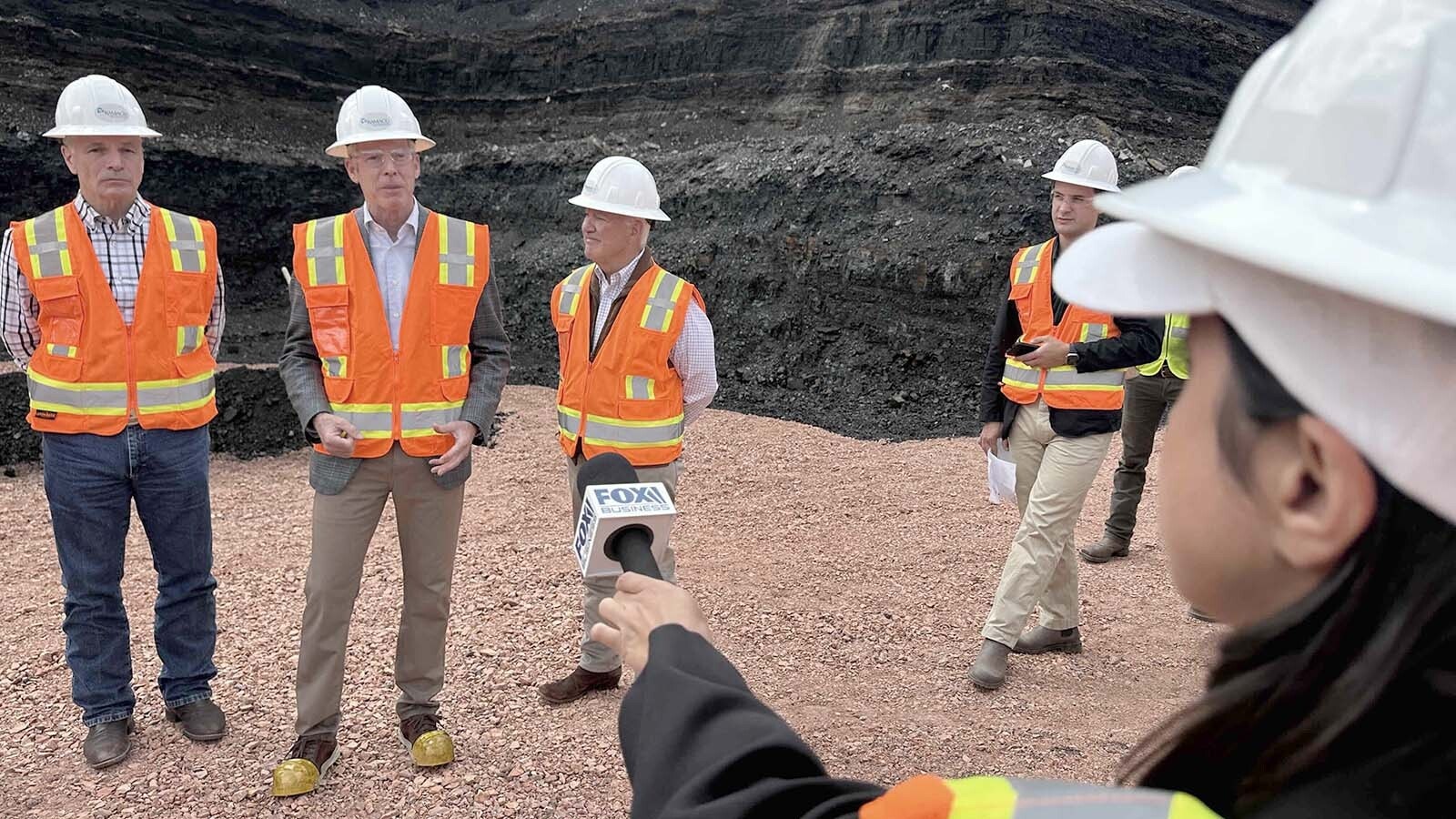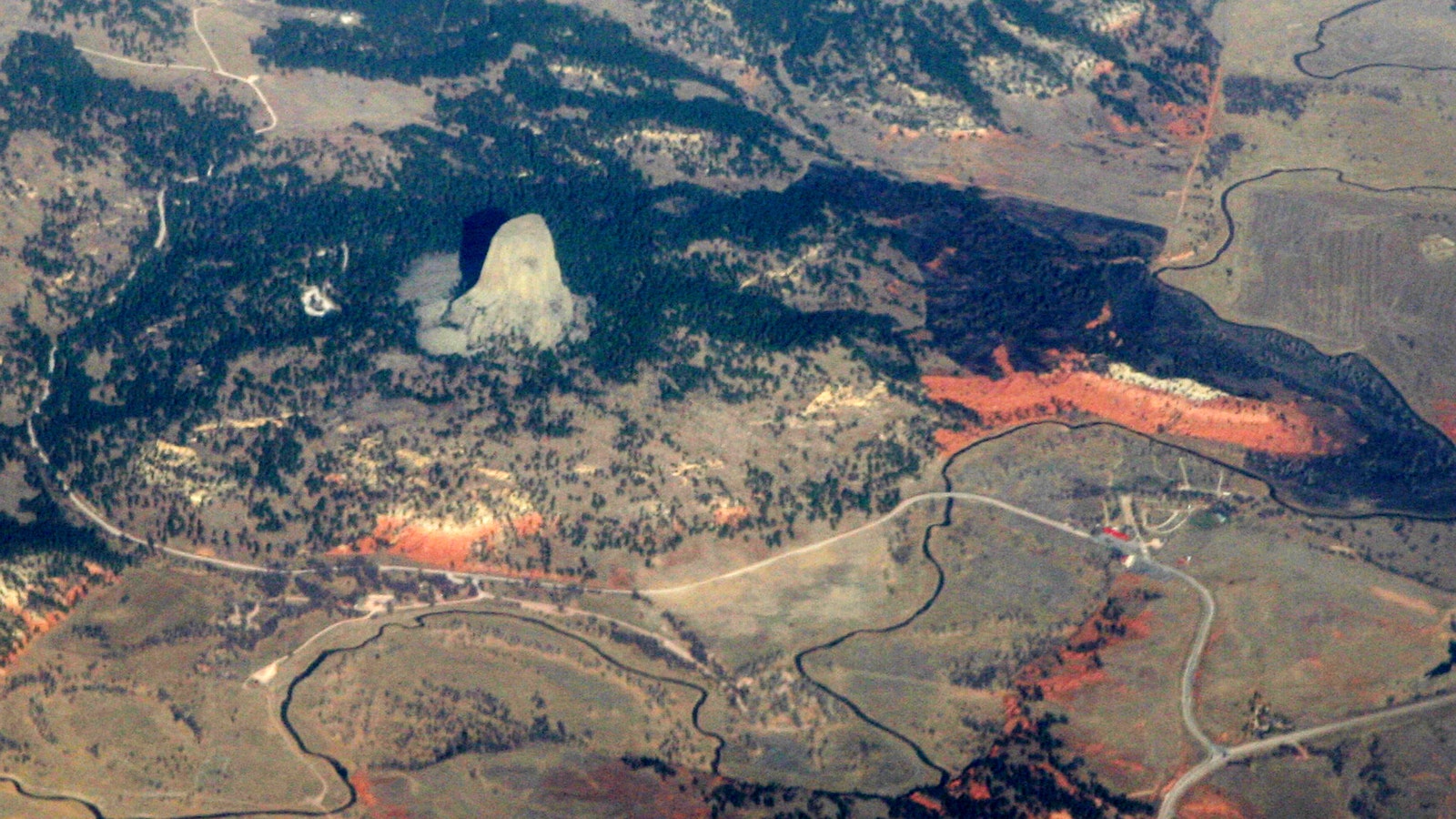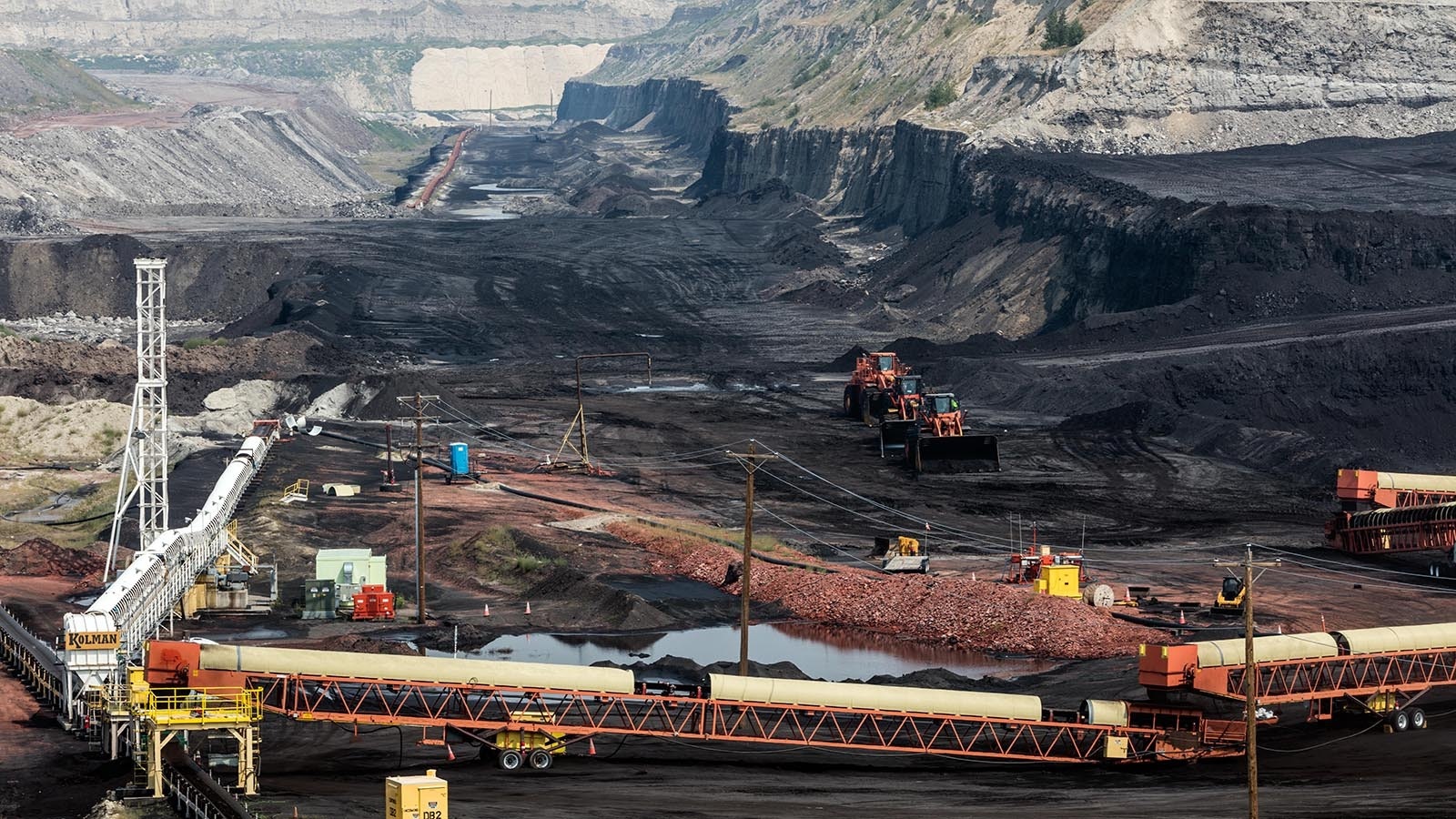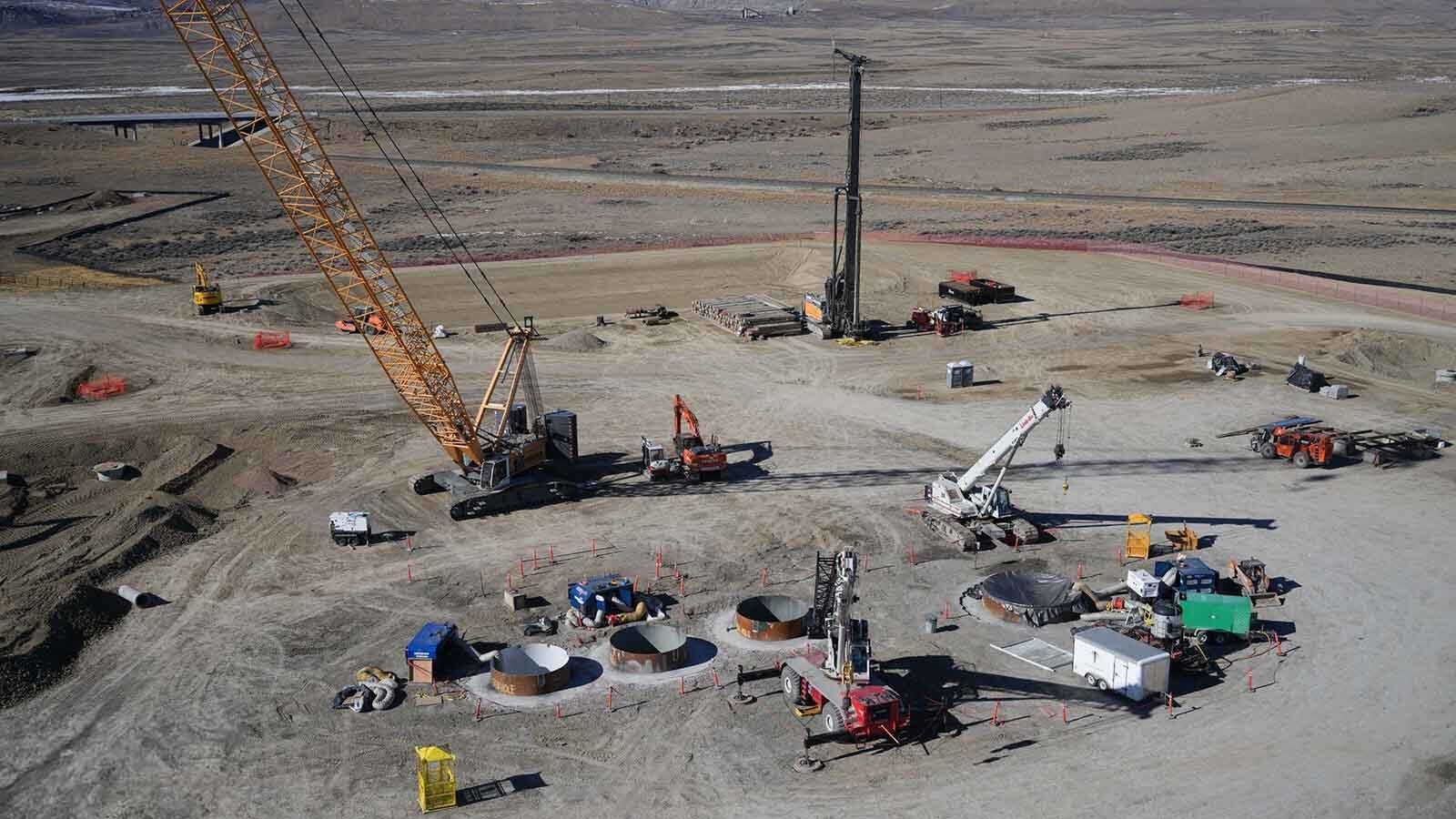CASPER — Electric utility giant PacifiCorp’s Devin Hutchinson understands how wind works.
When he climbed out of his Ford Explorer after the SUV rolled into the driveway of his southside home and glanced over at his wife who did the same, it was the way her long locks of red hair dusted up around her head in the wind that put s a smile on his face.
“Her hair whips around in 15 mph wind,” said Hutchinson. “Smell that? It smells like money.”
Hutchinson also understands why he’s one of the few who get excited when Wyoming’s famous wind kicks up.
“It’s not pleasant to step out into the cold Wyoming wind, (but) whenever the wind is blowing, I don’t mind,” he said. “It puts food on the table.”
Hutchinson doesn’t pretend to be an ancient mythical god who controls winds like in the epic Greek poem “The Odyssey.”
Still, he’s the guy everyone at billionaire Warren Buffet’s energy production giant PacifiCorp likes to telephone to find out how the wind is doing in the utility’s sprawling wind turbine franchise across the U.S. Northwest.
It’s Hutchinson’s job to know.
After all, the utility owns 1,032 turbines in the U.S. Northwest and is the most by any rate-regulated power company in the western half of America. If the wind blows, the turbines are producing power over the utility’s hundreds of miles of high-voltage lines.
That translates into money.
Hutchinson, PacifiCorp’s senior engineer in charge of operations and project manager, sat last week with a few dozen of his co-workers in an inauspicious wind Mission Control operations center in Casper where all those turbines are monitored and regulated.
Located along rutted Alpine Drive only a stone’s toss from the frozen North Platte River where common goldeneye ducks waddled on the ice looking for food, the nerve center of the office is lined with enough computers and monitors to make a dozen basement-dwelling nerds green with envy.
An abandoned furniture warehouse, a martial art building and a rail spur are neighbors for PacifiCorp’s nerve center as it monitors its cache of turbines. You know you’ve arrived when you see the barbed-wire fence surrounding two very large facilities with science-fiction looking transformers and other electrical equipment sitting in the parking yard.
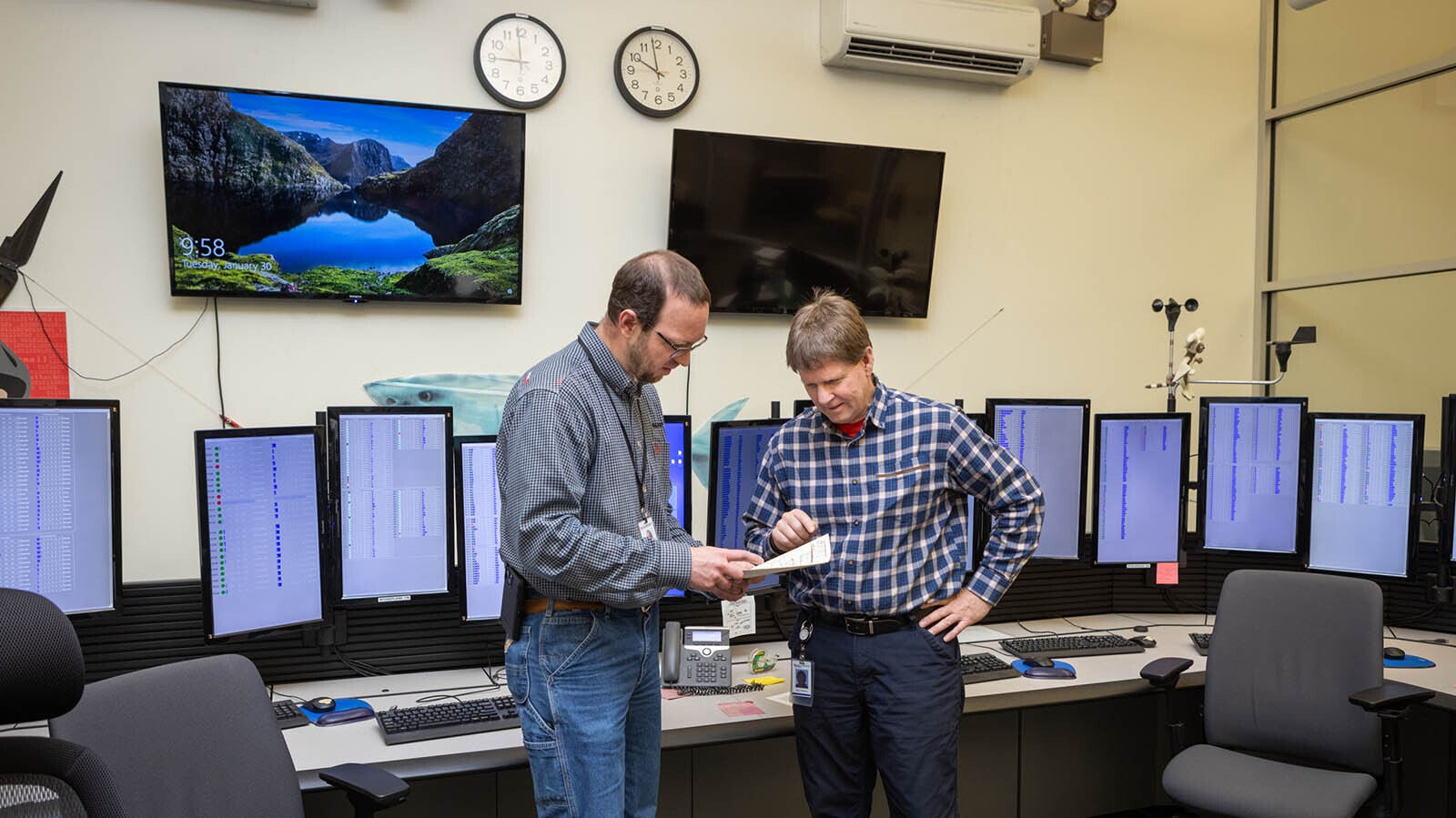
Pedaling To Work
On some days, folks around Casper may spot Hutchinson pedaling his bicycle to the industrial westside operation center where he parks his wheels in his office cubicle next to a huge glass office dubbed as “fishbowl.”
“It’s unsafe to ride to work in the cold when anything is at 20 degrees,” said Hutchinson, who checks out the wind chill factor before jumping on his bike.
The fishbowl is where the monitoring for PacifiCorp’s wind turbines happens.
The glass cage has 16 large computer screens with displays of all the wind turbines in the company’s inventory in the northwest.
Tiny box-shaped icons on the computer screens — which appeared to be turned sideways — tell Hutchinson everything he needs to know about the utility’s turbines in Montana, Oregon, Washington and Wyoming.
That’s the first thing he checked when he arrived at 7 a.m.
Big Brother For Wind
He squinted at the screens from outside the fishbowl, but quickly pulled out his security key card to open the glass door and go over to the machines to see if power was down on any of the turbines.
The nameplate on the turbines advertises that the total portfolio of turbines can generate up to 2,556 megawatts of juice, but that’s an unlikely target as the utility estimates it produces roughly 40% of the time in a year, at a best-case scenario of 30 mph windspeed.
In reality, power capacity levels vary based on where the turbines are located, how fast the wind blows, how high they are off the ground. And the weather. A big factor to consider is how cold it gets and whether there is too much wind, which forces the company to shut down turbines to protect them from exceeding operational limitations.
That may seem like an oxymoron, that it gets too windy for wind turbines.
When it gets cold — down to minus 22 degrees — the turbines could breakdown, though they never do. At minus 35 to minus 50 degrees, like the temperatures and wind chills experienced in parts of Wyoming in early January, gears, brake assemblies and other mechanical parts may stop functioning.
However, last month’s freezing conditions had “minimal impact” on turbines, affecting roughly 2% of a total 158 turbines in Glenrock and 10% of the 72 turbines in Cedar Springs in central Wyoming, said Laine Anderson, PacifiCorp’s director of wind operations.
PacifiCorp’s southern wind farm projects were largely unaffected, he said.
But last winter’s cold snap had a larger impact on the Glenrock and Cedar Springs operations because of “severely cold Wyoming weather with no wind,” Anderson said.
Well-Oiled Turbines
The cold hasn’t hit PacifiCorp’s turbines like those in Texas three years ago.
As Texas faced record-low temperatures in February 2021 and snow and ice made the state’s roads impassable, the state’s electric grid operator lost control of the power supply, leaving millions without access to electricity.
Some critics of the way the weather event was handled partially blamed frozen wind turbines.
PacifiCorp said it hasn’t experienced the same catastrophic events as Texas because contractors regularly inspect its turbines twice a year in the spring and fall, with some getting a once-a-year checkup based on make, model and manufacturer.
There are heaters in the turbine’s cover housing that hold the generating components, including a gearbox, drive train, brake assembly and other mechanical parts, which are lubricated and worn parts and filters replaced.
The turbines play a big role in PacifiCorp’s present and future for electricity generation and powering close to 2 million homes in the U.S. West.
What happens in the fishbowl helps the utility’s trading desk for electricity at its Portland, Oregon, headquarters. Any power generated by the wind turbines can be sold or bought in wholesale electricity markets between suppliers and generators.
It depends on supply and demand.
“It’s a market, the price of power goes up and down,” said Anderson of the trading desk that handles power sales and purchases. “We maintain a balance of what the customer needs and what we have./ We make sure there is a balance of power.”
PacifiCorp’s ownership of wind power as a percentage of generation is 22% of the utility’s total generating capability from all sources, and 11% of the energy delivered to customers as of year-end 2022.
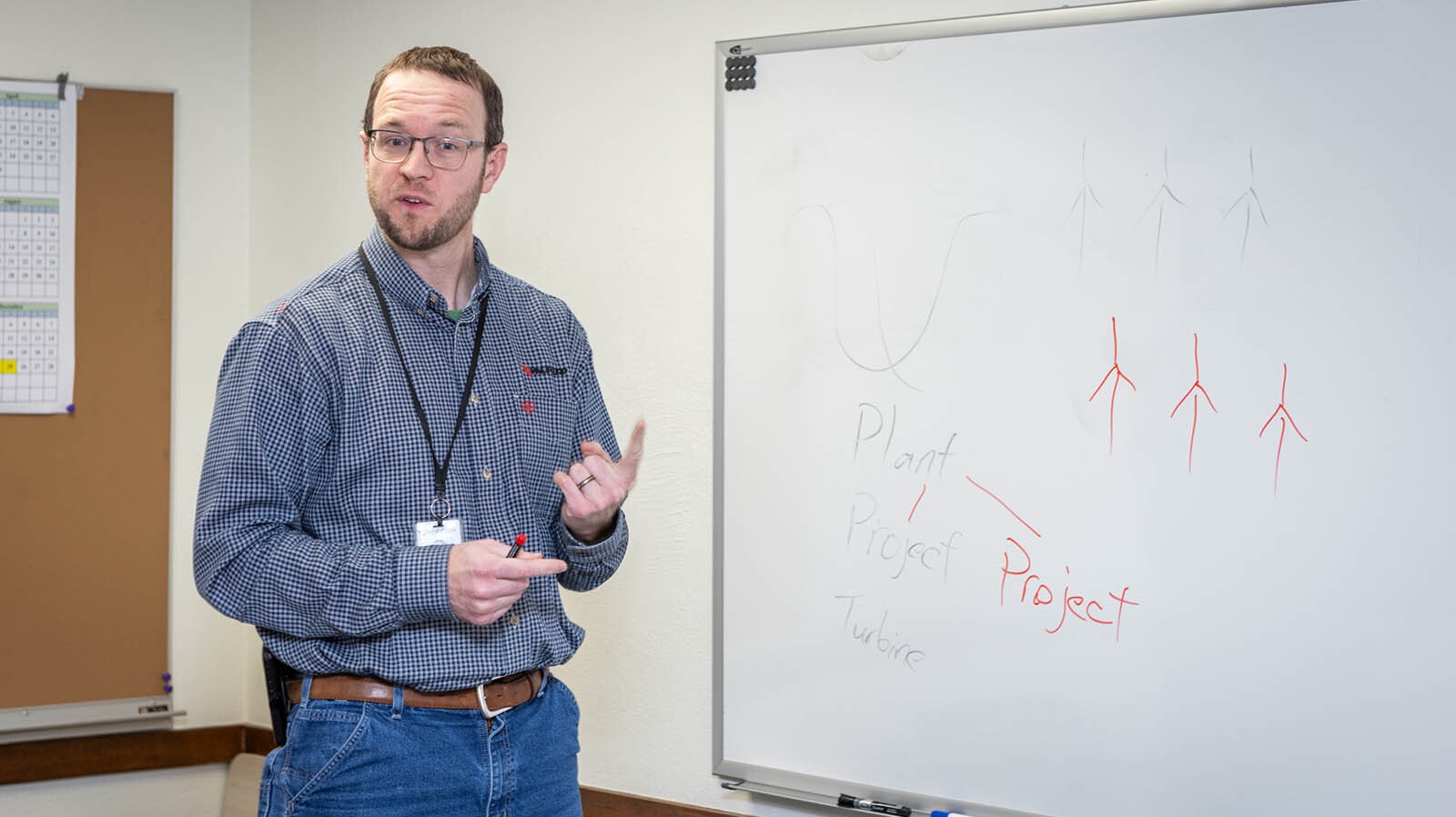
Life In A Fishbowl
Hutchinson’s work at the Casper center is vital to keeping wind turbine power distributed evenly and reliably over the transmission grid.
For instance, the reports submitted by Hutchinson to the utility’s trading desk show how much power is available from the wind turbines at any given moment.
Like stockbrokers, it’s important for the trading desk to know because the traders can then determine how much power is dispatched over Pacificorp’s own grid, and how much power can be dispatched to buyers outside of their system. PacifCorp’s power plants can throttle up or down based on electricity needs.
A third function of the Wyoming wind operation center is for PacifiCorp to provide data and regular updates on its turbines to contractor General Electric in Schenectady, New York.
GE is responsible for maintenance of the turbines and scours the data from the Casper center for anomalies.
Hutchinson also submits quarterly reports on wind speeds, turbine outages and other buckets of information on each of the more than 1,000 turbines to the North American Electric Reliability Corp., an Atlanta-based parent for half a dozen regional grid entities that seek to ensure the power system is reliable and secure in the U.S.
“I’m here every day, Monday through Friday,” Hutchinson said. “There is a reason why I picked my cubicle just outside the fishbowl.”
Hutchinson doesn’t waste time getting into the fishbowl.
“The first thing I do every morning is load up the screens and plan out my day from there. I look for first if there are fires to put out,” he said. “If I see a large batch of turbines off, I look into what is going on, and then make appropriate decisions to get them back online.”
The job is exhilarating for Hutchinson, who said it is fulfilling.
“I like energy. I really like the product that we provided to our customers,” he said. “It is really satisfying.”
Pat Maio can be reached at pat@cowboystatedaily.com.


